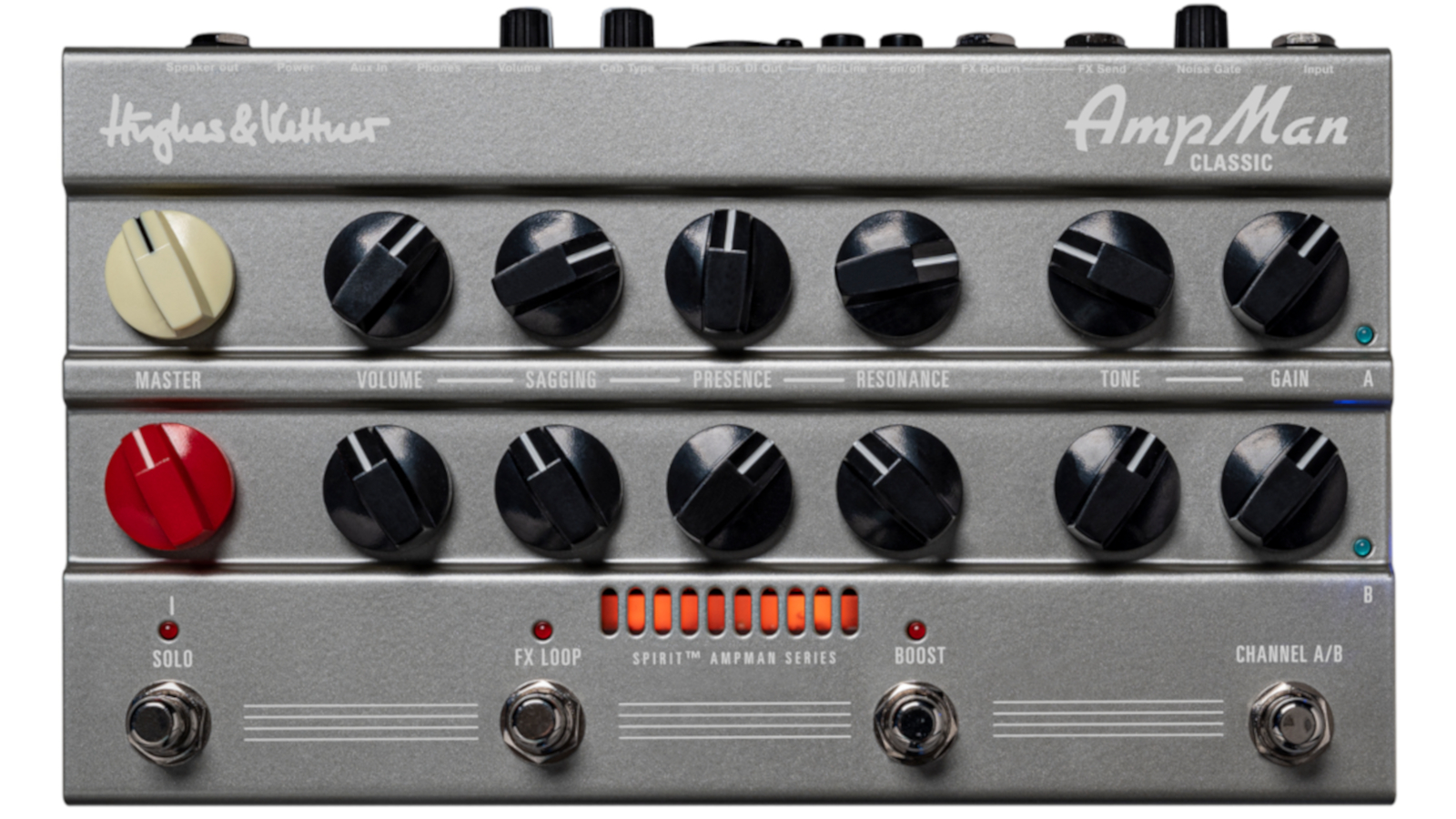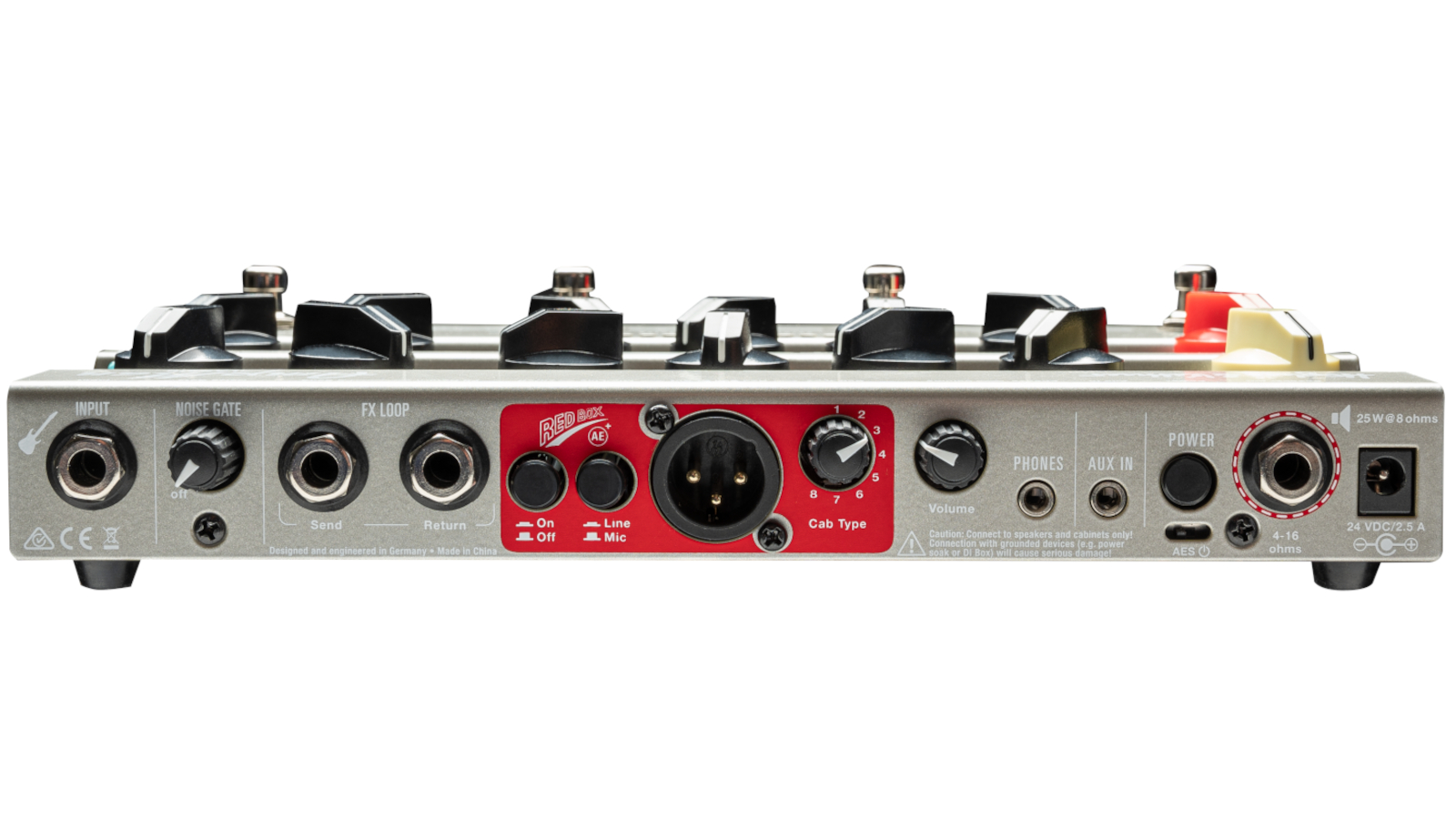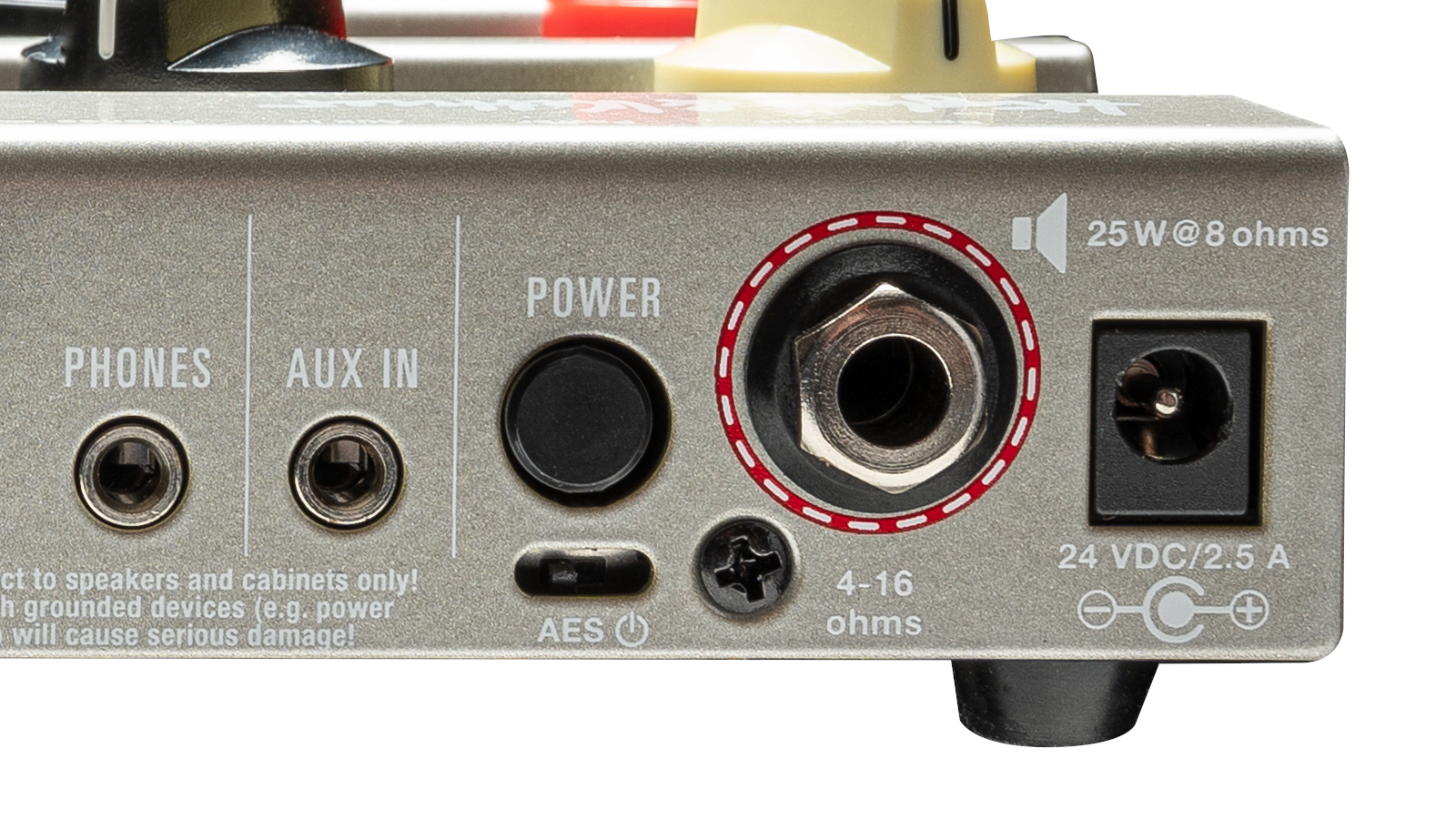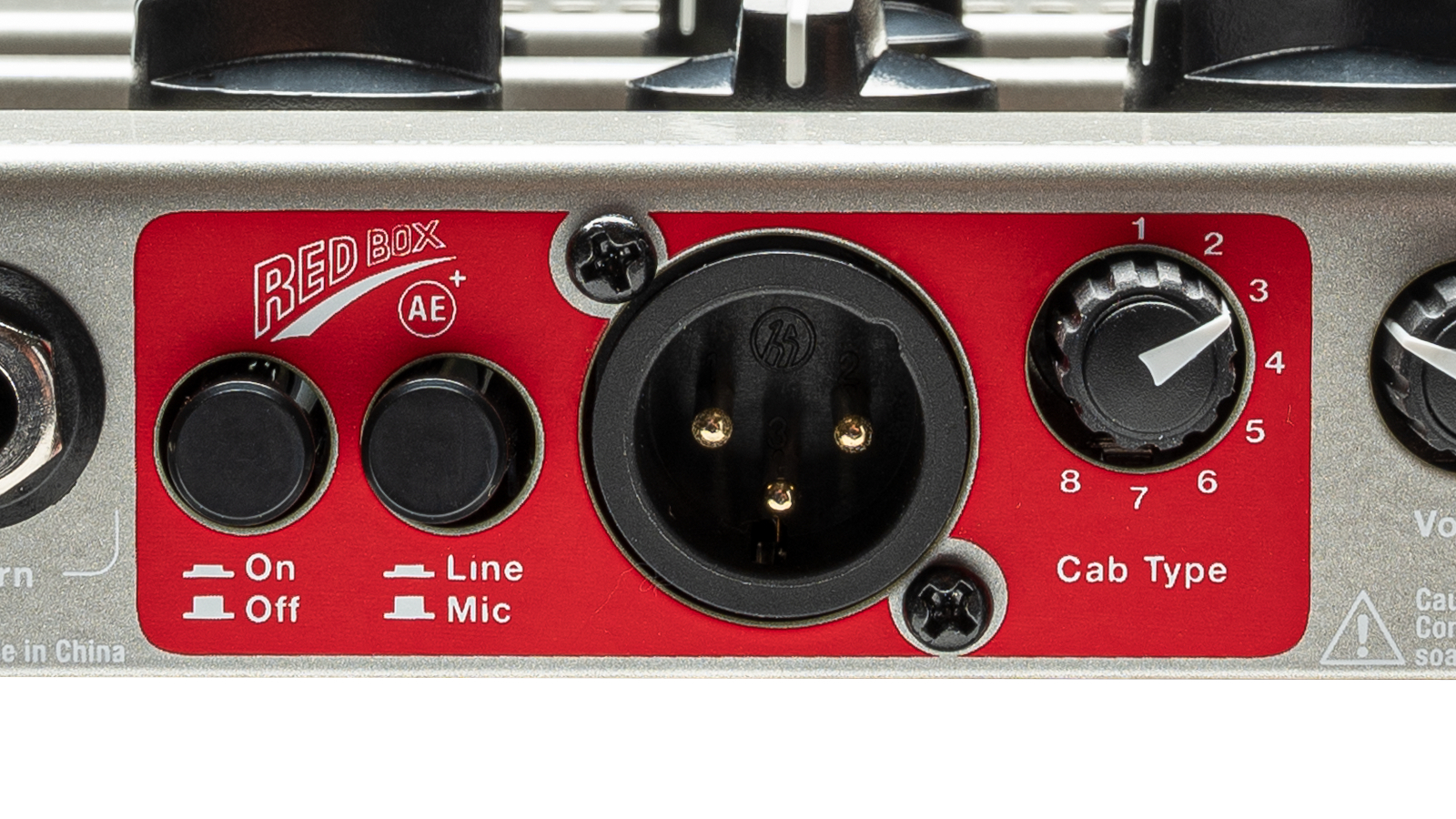GuitarPlayer Verdict
A ton of power, versatility and usability for the money.
Pros
- +
A lot of amp-like tone and flexibility in a portable and reasonably priced package
Cons
- -
Several controls don’t function quite as their labels suggest and require some hands-on experience to understand
You can trust Guitar Player.
German Gear Maker Hughes & Kettner has long displayed an appreciation for classic tube-derived tones attained via alternative means. Several years ago, the company coupled tubes with solid-state and digital control methods and effects in its TubeMeister and GrandMeister series of über amps.
With the Spirit 200 amps of a couple years back, however, H&K’s thinking had evolved toward an ongoing appreciation of tube tone generated by the Spirit Tone Generator.
Developed by H&K’s chief developer Bernd Schneider, this solid-state technology is not modeling as we’ve come to know it – and, in fact, isn’t modeling at all – but a fully analog amplification system engineered to accurately mirror a tube’s response to the incoming electric guitar signal and deliver a similar tone and playing feel.
As embodied in the Black Spirit and Spirit Nano series, those results were impressive. Now H&K has placed the Spirit Tone Generator in its new AmpMan Classic pedal amplifier (the high-gain AmpMan Modern also available).

Comprising a two-channel amp in a 10 x 5.5 x 1.5-inch floor unit with impressive functionality, oodles of connectibility and a 50-watt power amp, it puts a lot of versatility under your toes.
For all that it offers, the AmpMan Classic attains its impressive price point mainly by being a WYSIWYG version of H&K’s more comprehensive Spirit-loaded offerings, such as the Black Spirit 200 Floor.
Rather than the bigger, more expensive Floor’s deeply programmable presets, seven foot switches, and several built-in effects, the AmpMan Classic delivers two foot-switchable channels, each with controls for gain, tone, resonance, presence, sagging and volume, with shared master and solo.
There are no presets, user patches or effects, but it does have a foot-switchable FX loop, boost and solo, plus many ways to connect the thing up.

Narrow as it is, the AmpMan’s back panel is fully loaded with an input, a noise-gate level control, an FX loop send and return, the built-in H&K Red Box cab sim’s on/off switch, a line/mic switch, an XLR DI output and an eight-position cab-type selector.
There is also a 1/8-inch stereo headphone jack with volume, a 1/8-inch aux input, the power switch, and a power-amp output capable of generating 50 watts into four ohms, 25 watts into eight ohms, 12.5 watts into 16 ohms. Here is where you’ll also find the input for the included 24-volt DC power adapter.
Highlights of the design include the resonance control to fine-tune the low end, the sagging control to induce compression-like power-supply lag, and a selectable solo boost level with foot switch, which is extremely handy to help your leads cut through the band.
Most importantly – both to H&K and likely to many users – is the emphasis on the fact that this is all strictly analog stuff. While the company doesn’t pretend there are tubes inside that narrow perforated window between the knobs and the foot switches, whatever is in there gives off an enticing orange glow that implies it’s doing much the same thing.

Using a Fender Telecaster and a Gibson Les Paul, we tested the AmpMan Classic through its headphone output, with its Red Box DI into a recording interface, and via the power-amp output into an open-back 1x12 cab with a Weber Blue Dog Alnico speaker.
What we found was an impressive range of useability. Before delving into sounds, though, a little semantics: Given its straightforward, amp-like control layout, the AmpMan is very easy to use, but the biggest hurdle comes from H&K’s labeling of the knobs.
In use, resonance and presence play more like traditional bass and treble controls, respectively, while the tone knob on each channel doesn’t dial in highs as you’d expect but, in H&K’s own words, “sweeps from British to Californian flavor.”

As for the sagging control, it might be the most easily misunderstood of them all. Whereas sag is the slight compression induced by an amp’s tubes and power supply at high volumes (a generally subtle effect that is felt more than heard), the sagging control takes the AmpMan Classic’s response from tight and dull to loose, raw and rather ragged.
While these are all useful controls, you’ll want to play with them a while to come to a full understanding of their functions and find your own sweet spots.
Once you do, the AmpMan Classic has a lot to offer for its price. We were immediately impressed with the clean tones on channel A, which segue into tasty, dynamic edge-of-breakup textures with the gain control advanced. The tone control takes them from Vox to black-panel Fender, all arguably the equal of many mid-level tube amps.

Channel B provides very playable crunch and lead tones and can achieve some really likeable renditions of both American and British pushed-amp overdrive with some careful application of the sagging control. Crank it with gain pushed up high, and things will get fizzy and fall apart, but there’s a broad range of voices in here before it all goes crazy.
The AmpMan Classic interacted well with a handful of overdrive pedals in front, and it handled common tremolo, delay and reverb pedals in its loop without issue. All in all, it really did sound and feel impressively tube-like too, although arguably more so into the headphones or DI’d into studio monitors, where it’s all taken a step away from our “amp in the room” expectations.
The built-in power amp sounded very good into the 1x12 extension cab with traditional guitar speakers, but it also gave us the impression of a tube preamp into a solid-state output stage, which is kind of what the pedal is emulating anyway, given that the Spirit Tone Generator isn’t applied to the unit’s power amp.
The 25 watts it delivered into the cab’s eight-ohm load provided enough oomph to hang with a drummer in a small club or rehearsal space, although not with the decibels we’ve achieved from many tube amps with similar ratings, or even somewhat less.
That said, it sounded very good, and it sure is a handy compact fly rig or easy-loading solution for gigs and rehearsals. Add it all up and it’s a ton of power, versatility and usability for the money, and it deserves an Editors’ Pick Award.
Specifications:
- CHANNELS 2
- CONTROLS Gain, tone, resonance, presence, sagging and volume on each channel. Shared master and solo controls. Foot-switches for channel A/B, boost, FX loop, and solo. Noise gate level; RedBox DI on/off switch, mic/line switch, XLR out, and eight-position rotary cab-selector; headphone volume, and power switch on back panel
- POWER 50 watts into 4Ω, 25 watts into 8Ω, 12.5 watts into 16Ω
- EXTRAS Noise gate, FX loop, built-in RedBox cab sim, aux in, headphone out
- WEIGHT 7.8 lbs
- BUILT Assembled in China
Visit Hughes & Kettner for more information.
Dave Hunter is a writer and consulting editor for Guitar Player magazine. His prolific output as author includes Fender 75 Years, The Guitar Amp Handbook, The British Amp Invasion, Ultimate Star Guitars, Guitar Effects Pedals, The Guitar Pickup Handbook, The Fender Telecaster and several other titles. Hunter is a former editor of The Guitar Magazine (UK), and a contributor to Vintage Guitar, Premier Guitar, The Connoisseur and other publications. A contributing essayist to the United States Library of Congress National Recording Preservation Board’s Permanent Archive, he lives in Kittery, ME, with his wife and their two children and fronts the bands A Different Engine and The Stereo Field.
"The only thing missing is the noise from the tape loop." We review the Strymon EC-1 Single Head dTape Echo, a convincing take on a very special vintage tube Echoplex
"BigSky MX will be replacing the BigSky as my go-to reverb pedal. I’ve heard nothing that covers all the bases with such pristine and detailed audio quality." We crowned the Strymon BigSky MX the champ of multi-reverb pedals












